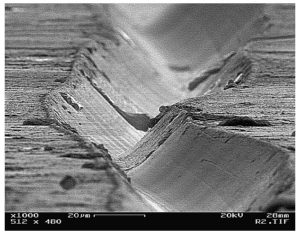ISSN 2052-3033 (Online)
NEW: SEQUENCE Five: About Silence, 2016–present
- Liz Greene, ‘Silence’, SEQUENCE 5.1, 2016. Online at:
https://reframe.sussex.ac.uk/sequence5/archive/sequence-5-1/ PDF / EPUB / MOBI

In June 2013, I created a radio show, Smithereens – Silence, for Radioactive International, an online alternative free radio station. […] Radio allows an opportunity for many forms of sound art to coalesce in one space. Smithereens – Silence was ‘aired’ as a ‘live’ show and now is available to stream as a podcast.
[…] Here, I want to reflect on how a radio programme can be made about silence when, as a medium, it is all about representing sound. I tease out why I needed to make such a programme and what the benefits of such a show are. To begin to consider these issues it is first worth considering what silence is and how it has been previously represented in the audio-visual arts, alongside how it is considered in political, philosophical and spiritual terms. [Liz Greene, SEQUENCE 5.1, 2016]
We are delighted to present the latest issue of SEQUENCE: Serial Studies in Media, Film and Music, REFRAME‘s experimental, peer-reviewed, and sequential edited-collection format.
SEQUENCE Five: About Silence offers its readers, and potential interlocutors, space for reflection on, and discussion of, notions of silence, and in particular on forms of creative and critical practice which turn on as well as treat silence – as a space of creativity and criticality. The inaugural contribution to this issue, and to this topic, is by Liz Greene, an academic and sound practitioner whose main research interests are in the theory, history and practice of film sound, currently based at Dublin City University. In her essay “Silence,’ Greene focuses on a piece of her internet radio practice as a space in which to “address silence and silencing in a medium rarely considered for such questions and reflections.”
As usual, as we are sequentially inviting responses to the first entry in this iteration of SEQUENCE, Greene’s article also constitutes a Call for Contributions for further About Silence sequences. If you’re inspired to respond, especially if you have practice or written research work in progress on any of the topics raised by her essay, and/or the SEQUENCE title, in relation to any relevant cultural or communications medium, please get in touch with us at SEQUENCEserial[at]gmail[dot]com. Multimedia responses of all kinds are also very much encouraged. But it would be worthwhile to discuss any substantial idea with us at an early stage in your planning. All contributions need to comply with UK copyright law and the current understanding of fair dealing. Contributors should note that their submissions will be formally peer-reviewed. But there are no editorial prescriptions on length or content, except that your work should be some kind of ‘sequential response’. If you don’t want to take part right away, you can still enter the ‘chain’ of responses later on.
If you’d like to offer a more concise response, there is also the option of leaving a comment in the moderated stream at the foot of each SEQUENCE Five entry. SEQUENCES may be long and short in all sorts of ways.
Catherine Grant
SEQUENCE Five is being co-edited by Catherine Grant (founder and—with Russell Glasson and Katherine Farrimond—co-editor of the SEQUENCE project), with Professor David Hendy.

